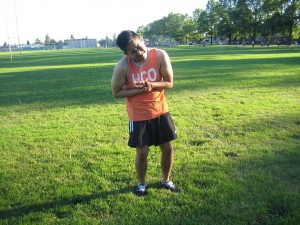The wrist is comprised of eight carpal bones that are connected together by the ligaments. There are several nerves, tendons and blood vessels that pass through between the hand and the wrist. With this in mind, wrist pain is one of the common complaints of many individuals all over the world. There are many causes of wrist pain such as sprains, stress injuries, fractures and certain diseases. Even though it can be difficult to diagnose the precise cause of the pain, various first aid measures and treatment options can be performed to help restore the function and strength as well as minimize the pain.
Torn cartilage
If there is a torn cartilage, it is important to provide enough time for the injury to heal, applying ice and administering anti-inflammatory medications to help ease the pain and inflammation. In some cases of severe tears on the cartilage, it would require minimally invasive surgery. Arthroscopy is usually carried out which involves the use of small-sized instruments to assess the wrist for joint damage, tears or disease.
Ligament pain
When it comes to tears and sprains in the ligaments, it is recommended to splint the wrist for 3-6 weeks. The wrist must be given time to rest so that it can properly heal. In case there is a tear in the ligament is severe that the joints are no longer aligned, it would require surgery to repair the ligament or placement of pins to hold the bones together so that they will realign. In case the torn ligament did not heal over time, the doctor might surgically graft a tendon from the same wrist that will serve as a replacement to the damaged ligament.

Strains
Constant injuries will worsen previous sprains and cause the development of new strains. A wrist strain can be caused by carpal tunnel syndrome, sports and even manual labor. In most cases, the individual can complain of tingling, numbness and muscle weakness. It is not uncommon for the pain to radiate to the arm up to the elbow. The doctor will require the application of a splint and immobilizing the wrist.
The objective of applying a splint is to reduce the tingling sensation and numbness. Over-the-counter medications can be given to help minimize the pain linked with inflammation. In case the injury has no accompanying inflammation, acetaminophen can be given. As for severe cases of wrist pain, a cortisone injection is the solution to provide relief to the affected nerves.
Breaks
For a broken wrist, as long as the bones are properly aligned, a cast would be required so that the bones are given enough time to heal without any disruptions. The individual will undergo regular X-rays to monitor the healing process. In case the bones do not heal after several weeks, the doctor might recommend the use of an electrical stimulator. If surgery is the chosen option, internal fixation is the recommended choice since it is more successful. The procedure involves the placement of screws that will hold the fractured bones together within the arm.
